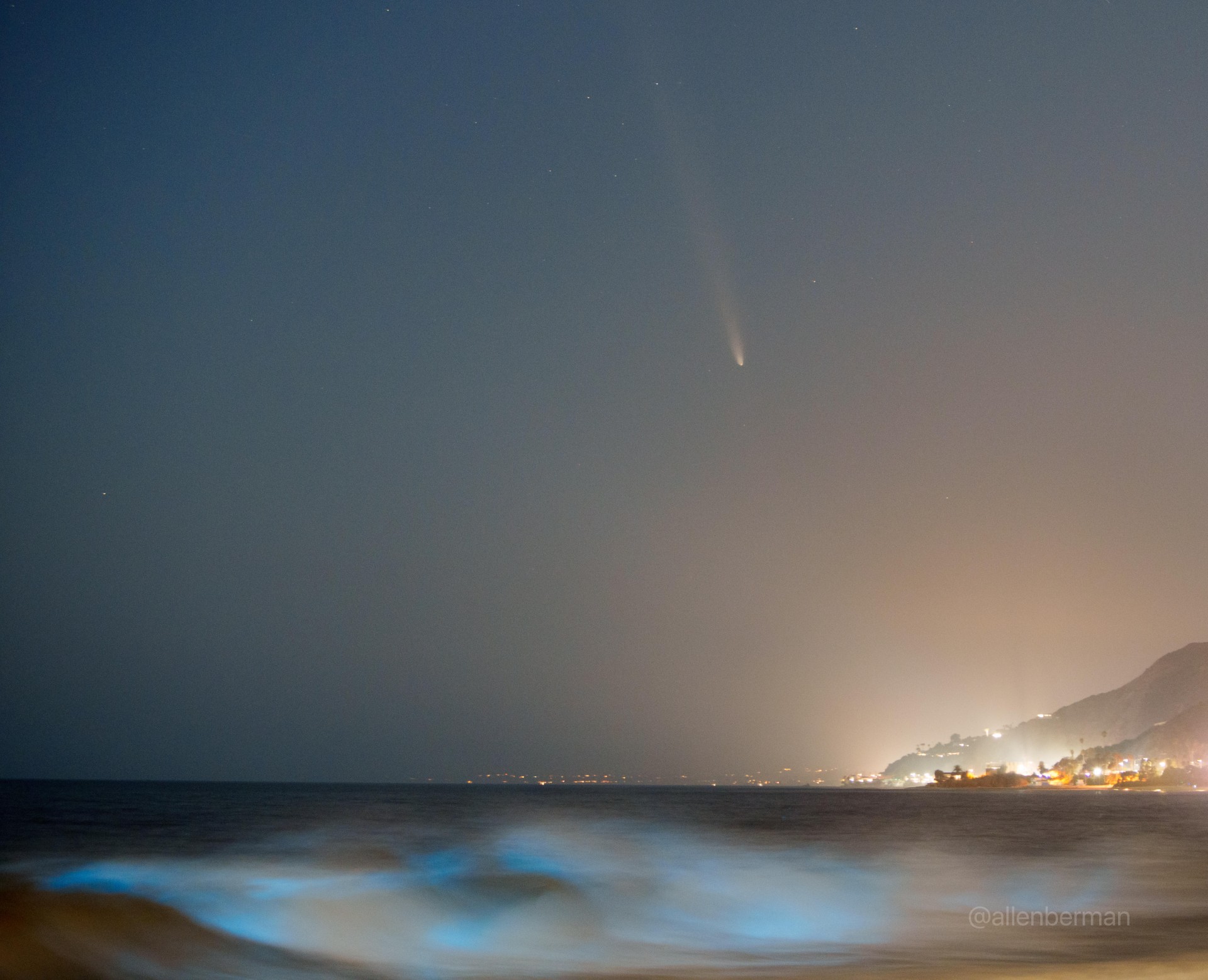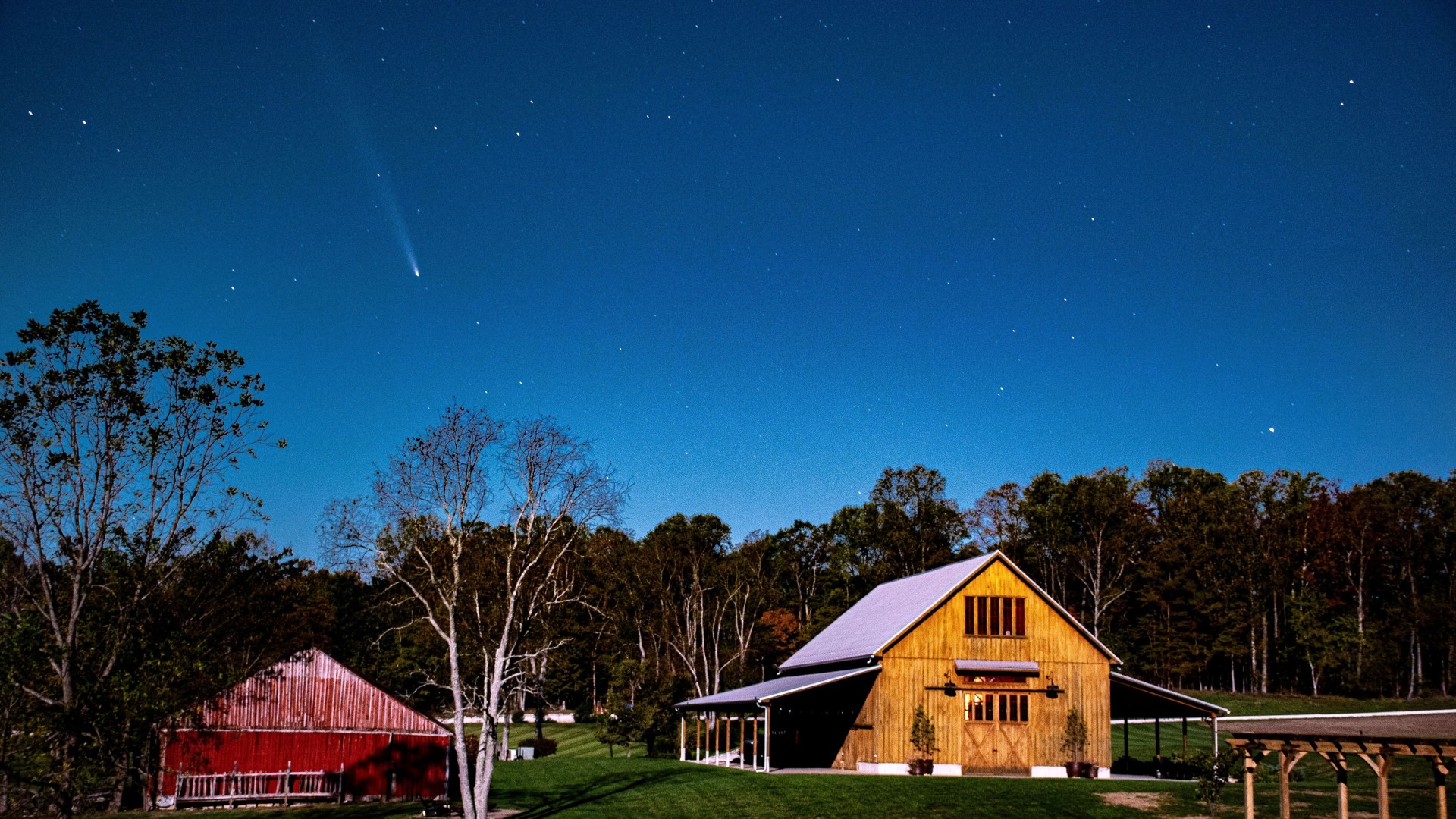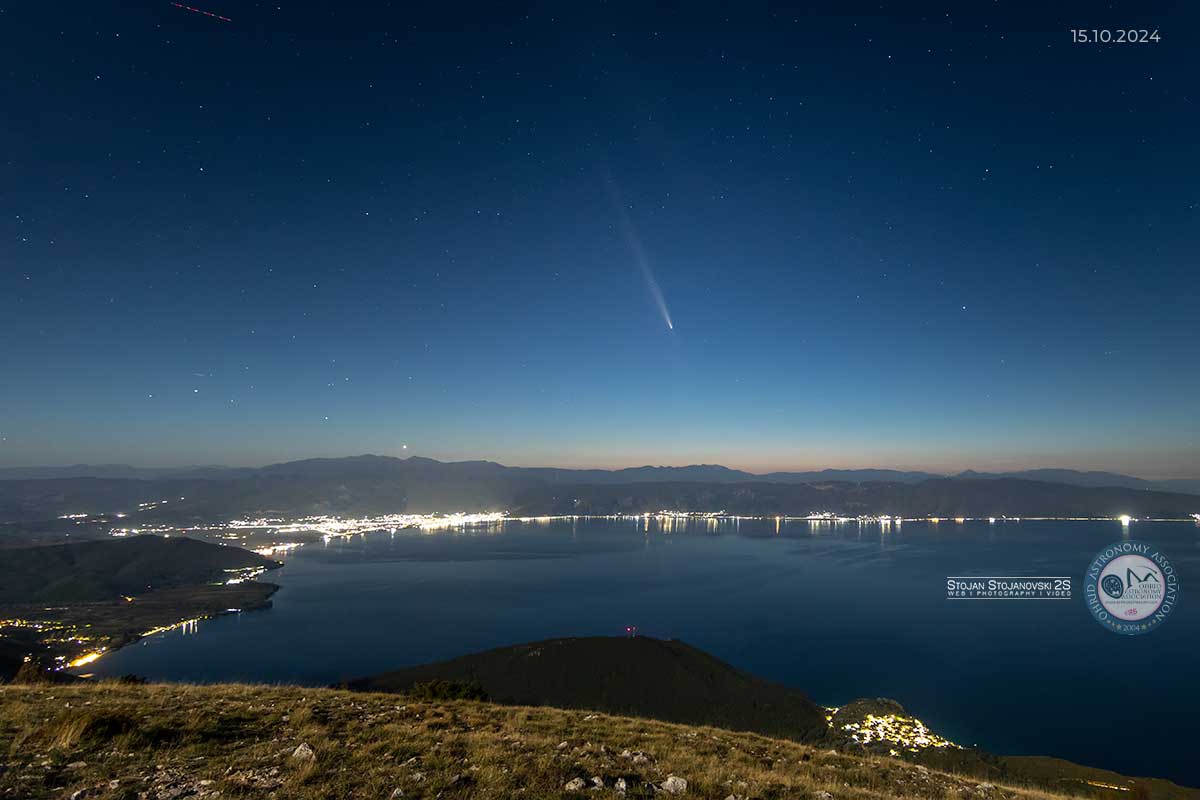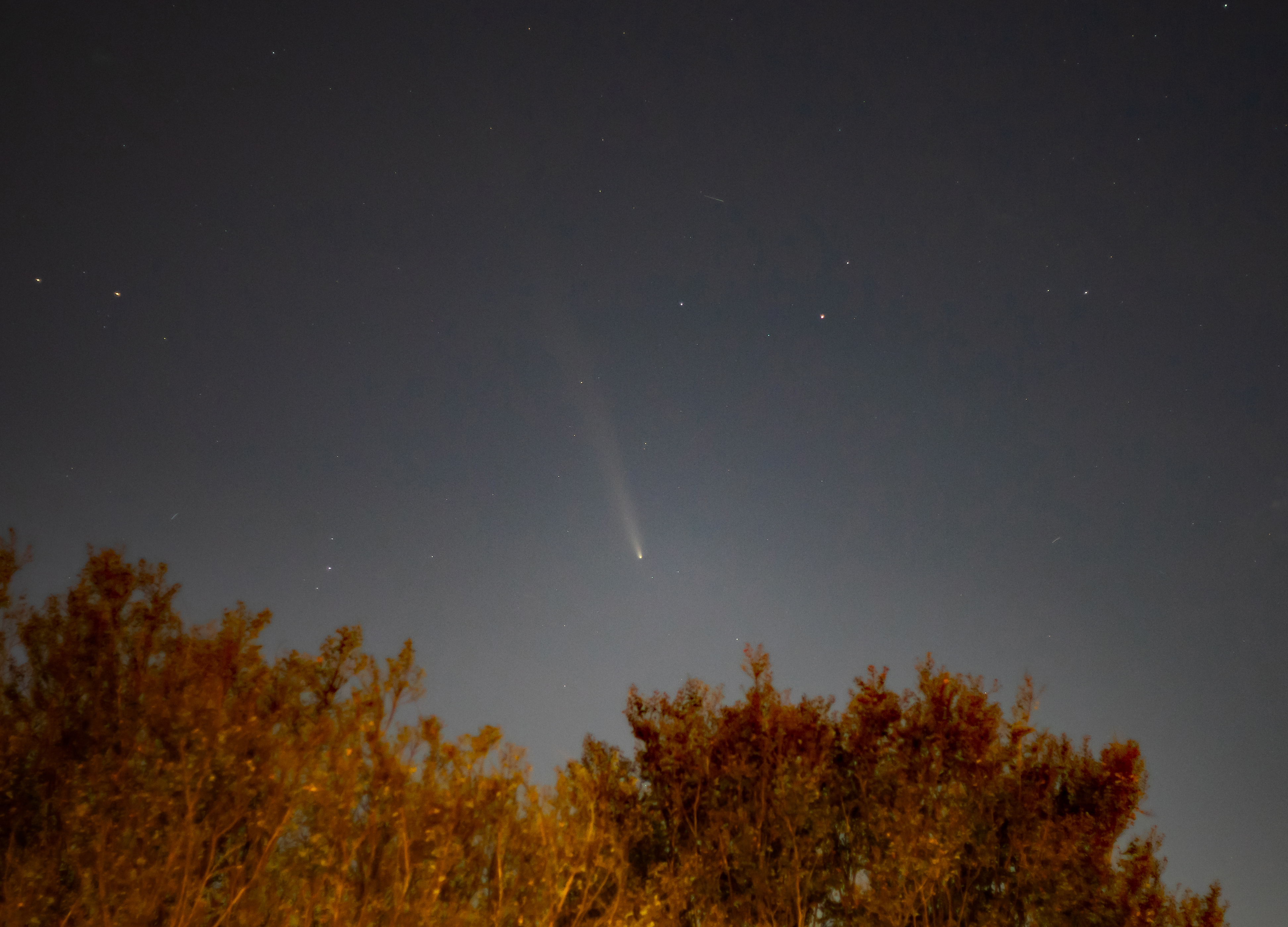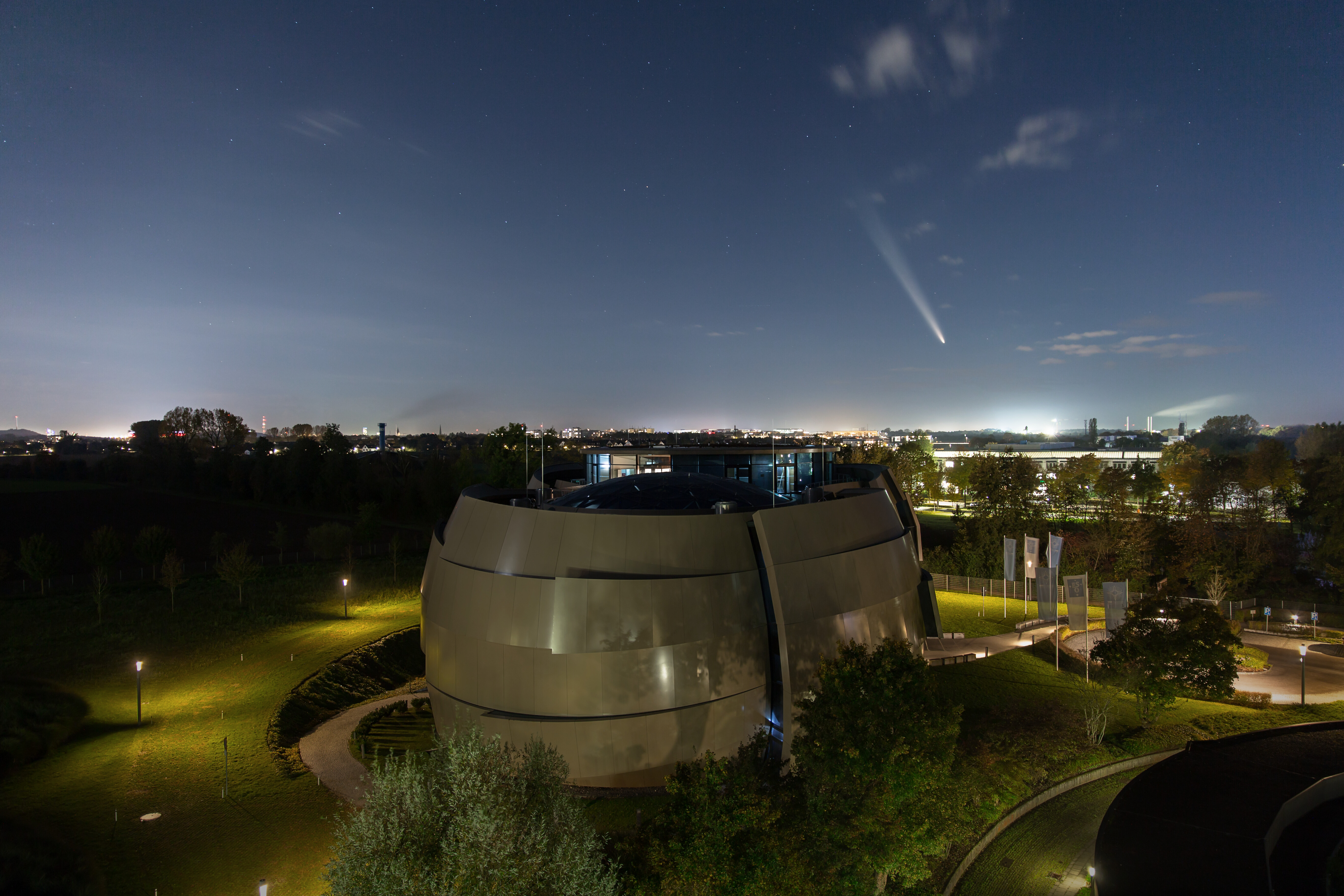See the 'comet of the century' light up the night sky in breathtaking photos
Comet A3 Tsuchinshan-ATLAS proved to be photogenic as it lit up the early autumn skies of the Northern Hemisphere this month.
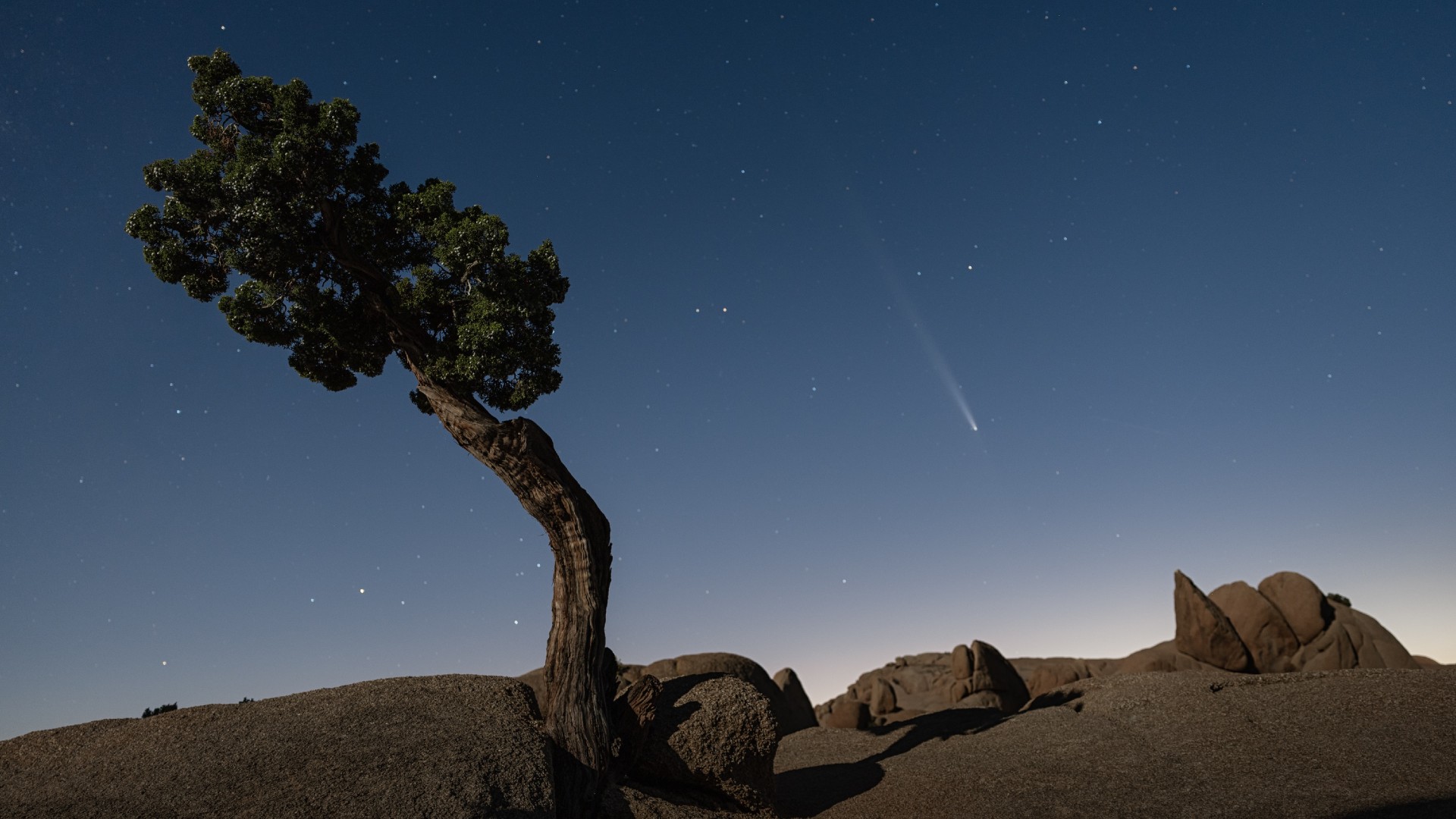
Comet C/2023 A3 (Tsuchinshan-ATLAS) has not disappointed photographers.
The photogenic comet is currently speeding away from Earth but is still visible in the Northern Hemisphere night sky for another week or so. It's grown fairly dim, but can still be seen easily with binoculars high in the southwestern sky after sunset above a bright Venus.
The comet, referred to by some as the "comet of the century," was visible to the naked eye earlier this month as it made its closest approach to Earth on Oct. 12. Comet A3 (Tsuchinshan-ATLAS) is now visible only in binoculars for most locations for the rest of the month and into early November, although it may be visible with a telescope for some time after that. Whether you've caught a glimpse of the comet for yourself in the sky or not, you don't want to miss these breathtaking comet Tsuchinshan-ATLAS photos we've rounded up from readers and photographers around the world.
Astrophotographer Chris Schur caught this incredibly clear shot of comet Tsuchinshan-ATLAS (or TA) above Payson, Arizona on Oct. 13 using an 8" f/2 RASA astrograph for a 6-minute exposure.
"A very deep shot of comet TA in a blue moon twilight which clearly shows the spike -like anti-tail and multiple rays in its ghostly flowing white tail," Schur wrote Space.com.
Related: Comet Tsuchinshan-ATLAS is still visible in the night sky, but not for long
Allen Berman caught this incredible shot of the comet above a glowing ocean in Southern California on Oct. 15.
Breaking space news, the latest updates on rocket launches, skywatching events and more!
"I never expected this. The comet was going to set over Malibu, CA tonight so I went out to shoot it. While on a wide shot I started noticing blue flashes," Berman wrote Space.com in an email.
"I actually looked behind me to see whether there was a police car on Pacific Coast Highway. Then I realized it was bioluminescence! Hadn't see that on our beach in years.
"So, here you go: bioluminescent waves and a once-in-80-thousand year comet."
Space.com's own Josh Dinner caught the comet over Bloomington, Indiana on Oct. 16.
"It was hard to see with just your eyes, but in places without a lot of ambient light it's visible. It didn't help that the largest full moon of the year was rising just behind me, but it did add some nice lighting for the barns," Dinner said.
Stojan Stojanovski of the Ohrid Astronomy Association caught this shot of the comet above Lake Ohrid in Macedonia on Oct. 14.
"Weather was good today and we got maximum I think from the comet," Stojanovsky wrote in an email. "Taken with Canon R5C at 1600 ISO, 6 seconds exposure."
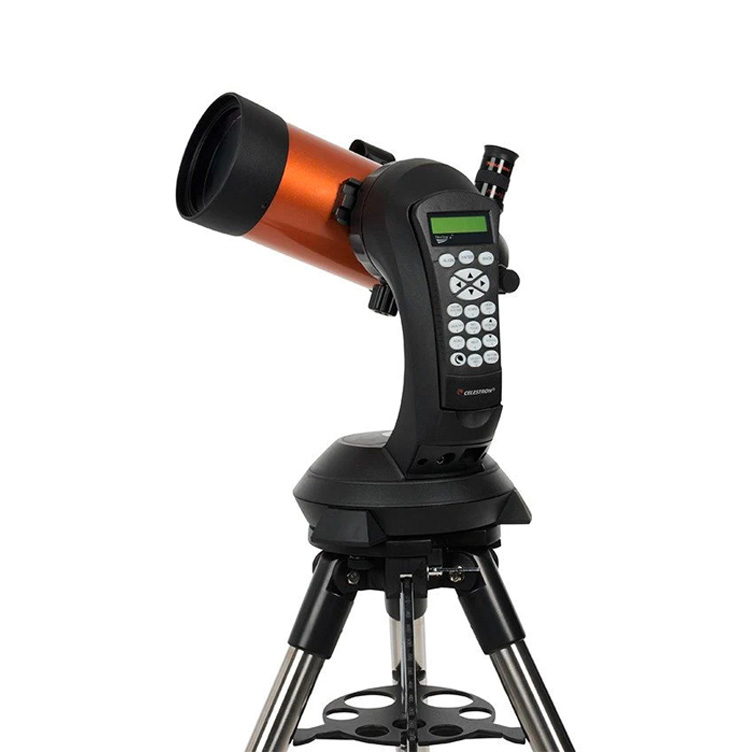
Want to see comets and other awesome stuff in the night sky? The Celestron NexStar 4SE is ideal for beginners and provides crisp, clear views of a wide range of objects. For a more in-depth look at our Celestron NexStar 4SE review.
Osama Fathi saw the comet above Egypt's Black Desert on Oct. 18, shining beside the Milky Way.
"The comet is clearly visible these days, alongside Venus (below the middle of the image) and a part of the Milky Way arm, offering a breathtaking celestial show!" Fathi wrote Space.com in an email.
"While we were taking this picture and the moon was just rising, we could see it with the naked eye, and it was incredibly fascinating."
Mike "Mish" Shedlock caught Comet Tsuchinshan-ATLAS in the sky above a yucca palm, also known as a Joshua tree, in Joshua Tree National Landmark in Utah on Oct. 15.
"Conditions were perfect. A near full moon added light to the foreground so not everything was totally dark. The base shot was about 15 minutes after sunset and the horizon was still glowing," Shedlock wrote on his website.
Kevin McCarthy's persistence paid off, enabling him to catch this photo of the comet. "After days of trying, I finally was able to photograph Comet Tsuchinhan-Atlas in the sky above Charlotte, N.C., on the evening of Oct. 16, 2024," McCarthy wrote.
"I missed its peak brightness and needed a slow shutter speed on my camera to get a clear, detailed image shortly after sunset."
Jordan Ema-Otu caught this photo of Comet C/2023 A3 (Tsuchinshan-ATLAS) on Oct. 14 using a smartphone.
"The picture was taken at Fisherman Huts beach, in Aruba. Local time 7:22 p.m.," Ema-Otu wrote.
"The phone was set on astrophotography for 4 min. The major struggle was to protect the phone from the wind to avoid any movement."
Photographers with the European Southern Observatory (ESO) even got a glimpse of Comet Tsuchinshan-ATLAS, as seen in this photo taken in Germany.
"As it got closer to the sun, it heated up and developed tails of dust and gas observed by comet watchers around the world, including at ESO Headquarters in Garching bei München, Germany," ESO wrote in a statement accompanying the photo.
Eric Bordelon caught this photo of the comet above Louisiana near NASA's Michoud Assembly Facility, on Oct. 13, 2024.
"The comet is making its first appearance in documented human history; it was last seen in the night sky 80,000 years ago," a NASA caption accompanying the image states.
Like most comets, C/2023 A3 (Tsuchinshan-ATLAS) is believed to originate in the Oort cloud, a theorized shell of icy bodies that orbit at the far outer edges of the solar system.
While it was previously estimated that the comet takes around 80,000 years to orbit the sun, NASA now says it may leave the solar system entirely.
Want to make sure you see the next comet? Take a look at our guides on our best telescopes for beginners or the best binoculars to find the optics you need to see the next icy visitor to speed past the inner solar system.

Brett is curious about emerging aerospace technologies, alternative launch concepts, military space developments and uncrewed aircraft systems. Brett's work has appeared on Scientific American, The War Zone, Popular Science, the History Channel, Science Discovery and more. Brett has degrees from Clemson University and the University of North Carolina at Charlotte. In his free time, Brett enjoys skywatching throughout the dark skies of the Appalachian mountains.

